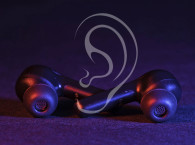
According to Strategy Analytics, the global market for true wireless stereo (TWS) earbud devices is expected to grow faster than smartphones did 10 years ago (70% CAGR vs. 60%). As the market research company notes, the category evolved from 1 million units of Apple AirPods sold in 2016 to 15 million in 2018, and selling a staggering 60 million units in 2019, with the introduction of the AirPods Pro.
Strategy Analytics says that total global Bluetooth headset sales have reached volumes over 300 million units in 2020 and that TWS Bluetooth headset sales are now more than half that (170 million). Juniper Research, in a report published in mid-2020, estimated sales of 260 million units for 2020. Other analysts estimate that Apple sold close to 85 million AirPods in 2020, taking as much as 70% of the total revenue in the TWS category, and 55% market share in units sold.
This also means that Apple’s AirPods business alone could already represent between 12 to 18 billion in sales (no one knows for certain, since Apple doesn’t discloses those sales figures). Anyway, even based on the lowest estimate, that represents a larger business in itself than most technology companies.
No wonder suddenly every audio and technology company is paying serious attention to this product segment pioneered by companies such as Bragi or Doppler Labs, only 6 years ago. And even more impressively, Apple’s designs are actually just great implementations of the basic concept, first translating the convenience of true wireless stereo, and in the second iteration (AirPods Pro) introducing active noise cancelling and hear-through, starting to evolve toward hearing enhancement. A very powerful platform, with loads of cutting-edge technology that does the essential very well, in typical Apple fashion.
But the AirPods Pro also surprised and excited the industry by introducing a new concept. Since the AirPods Pro are based on Apple’s own dedicated H1 headphone chip, the products are able to receive firmware updates that, among other things, introduced spatial audio support. The update also paved the way to new accessibility features, adding what Apple called “Headphone Accommodations.” Basically a way to amplify soft sounds and tune audio to help music, movies, phone calls, and podcasts sound crisper and clearer.
This accessibility feature is also implemented when the AirPods Pro Transparency mode is active, helping users to better recognize important sounds and dialog. And once again, by showing that TWS products can evolve in features, Apple gave the starting shot to a race that will pave the way to real hearing augmentation and hearables.

TWS Earbuds Are Just Starting to Evolve
According to Futuresource Consulting, this is a market in its infancy, with the potential to quickly challenge the hearing aid industry. As Futuresource’s latest research details, the so-called “global hearables market” (including all TWS earbuds, hearing aids and Personal Sound Amplification Products or PSAPs) represents (conservatively) 139 million units sold in 2019, with a market value of $19 billion US, forecasted to reach approximately $30 billion in 2021.
In stark contrast, Hearing Aids sell approximately 20 million units annually (volumes decreased sharply in 2020 due to the pandemic restrictions). According to the latest 2020 quarterly tracker report from Futuresource Consulting, the overall headphones market achieved year-on-year growth in value and units, which could have been much bigger if it wasn’t for supply-chain constraints that were unable to meet growing demand. And Futuresource estimates that TWS has been a key factor in that growth, accounting for more than 45% of total headphones shipped.
Excited by that market potential, consumer electronic and technology players are firing all cylinders in edge AI, sensor fusion, and better audio front ends for advanced signal processing. Research efforts are feeding fast-paced innovations in voice recognition, active noise canceling (ANC) and augmentation, while everyone is also researching new ideas, such has spatial audio and health applications. Of course, consumers can hardly keep up with all the possibilities.
A very useful summary of trends in this space resulted from research conducted by Austrian company ams AG in Spring 2020, with 2,000-plus consumers around the world. “Comfortable, Smart, High-performing Earbuds Survey,” focused on audio earbud uses, habits, and preferences, and concluded that comfort is still a key focus for users. But the survey also identified the benefits of active noise cancellation and volume-limiting technology as top earbud innovations now mentioned by consumers.
Consumers also mentioned 3D/spatial sound and long battery life as criteria for selection, which means that there is now a much better awareness of the category. Regarding design, ams studied user preferences between loose fit and tight-fitting in-ear earbuds depending on activity. The ams survey showed earbuds are an integral part of daily life for many consumers. Users in the US and some European countries reported that they tend to wear earbuds all day — while making calls, listening to music, or exercising.

Around 45% of the users surveyed by ams revealed they use tight-fitting, in-ear earbuds because they are perceived to stay in place (67%) and feel more secure when exercising (51%). However, consumers noted tight-fitting (occluded) earbuds are not comfortable for extended periods or they do not fit correctly (44% across all regions surveyed). Respondents also reported that they want to be aware of their surroundings, and that volume-limiting technology to prevent hearing loss or damage is important across the world with 56% requesting this feature.
Clearly, research shows that as consumers are becoming more familiar with new functionalities, such as ANC and hearing augmentation modes, the more they tend to consider them when choosing their next purchase. And users are now much more aware of form factors, being clear that loose-fit designs will be generally more well-tolerated for longer use. Still, users want the best of both worlds: loose-fit earbuds with advanced ANC and processing features.
Whatever the reason for considering the possibilities or choosing one design over another, research also shows that TWS earbuds will have short renewal cycles and that consumers are willing to investigate new designs regularly.

Bluetooth LE Audio Transition
Probably the greatest enabling technologies in the true wireless space will result from the implementation of LE (low energy) Audio. Isochronous channels (ISO) over Bluetooth LE is the foundation for LE Audio, introduced in the latest Bluetooth LE 5.2 specification. With ISO, several low latency and synchronized channels can be set up to stream audio over Bluetooth LE to several sinks, such as a pair of wireless earbuds... or many. The audio experience is also extended thanks to significantly reduced power consumption compared to Classic Audio, and improved audio quality due to new LC3 Codec, complemented by the mentioned ability to stream audio to an unlimited number of devices.
With these updates, the next generation of Bluetooth audio will enable new use cases, such as consumers sharing wireless audio (Personal Audio Sharing), and accessing location-based wireless audio sources, such as screens in public venues broadcasting wireless audio. Bluetooth 5.2 is now starting to be implemented in multiple source and sink devices, and will enable generally more reliable true wireless experiences, thanks to Multi-Stream Audio and the new, high-quality, power efficient, LC3 audio codec.
As Vincent Nallatamby, the founder and CEO of Tempow states, LE Audio “will significantly improve the performance of Bluetooth Audio and enable a new generation of Wireless Earbuds capable of substantial optimization from both a technical and user experience perspective.” The challenge now, as he noted in early 2020, is to match the availability of source devices with LE Audio support — smartphones, tablets, laptops, etc. — before the latest Bluetooth chipsets supporting LE Audio start moving millions.
The leading chipset and IP vendors are all now releasing the needed solutions. Since September 2020, the Bluetooth Special Interest Group (SIG) started qualifying products using the new LE Audio specification, originally reported in January 2020. CEVA announced in November 2020 that its RivieraWaves Bluetooth Low Energy (LE) 5.2 Platform received Bluetooth SIG Qualification, enabling its licensees to boost product development with fast time-to-market, benefiting from expedited end-product qualification process.

The Next Big Thing
In the middle of this key transition, and with several innovations and new platforms being announced, lots of new options are currently available to developers and brands to differentiate their designs. Apple’s competition is heating up from Amazon, Google, and Microsoft, all of which entered the TWS space in 2020, while Samsung, Xiaomi, and Huawei continue to aggressively expand their business. “While the rapid growth of the Chinese market is prominent, Chinese players are expected to pick up further in 2021.
Not only are global brands but the emerging Chinese local brands in low-end products will also command attention,” states Liz Lee, Senior Analyst at Counterpoint Research. “New models are ceaselessly released with various features and functions, including noise cancellation, bio-sensing, waterproofing, and integrated AI voice assistants in broader price ranges from low-cost entry to high-end premium,” she adds. “Based on future product strategies focused on voice communications from global tech companies and their efforts to create high-added value, the true wireless hearables are just becoming one of the daily necessities among consumers.”
And SAR Insight & Consulting predicts that this trend will inevitably disrupt the hearing aids industry, with a direct to consumer (DTC) and over-the-counter (OTC) approach being an opportunity too large to miss for consumer electronics companies.
Offering an apparently conventional TWS design, which survived multiple, similarly looking iterations, Australian startup Nuheara finally achieved its goal of standing out in a crowded consumer space, with the ability to enhance the user’s hearing ability. Nuheara’s latest IQbuds2 MAX Smart Hearing Earbuds ($399) are finally selling in volume. A bridge toward truly smart hearables, the Nuheara IQbuds2 MAX product enjoys critical acclaim thanks to a combination of great sound quality, advanced ANC and personalized hearing enhancement.

Nuheara IQbuds2 MAX earbuds use a powerful triple-core DSP system and enable even more noise control options, benefiting from broadband noise attenuation performed by ANC technology from Austrian firm ams AG. The product delivers an affordable option for consumers who are not ready for hearing aids, but who are looking for improved listening, and looking to enjoy a music listening experience as good as that of conventional earphones.
The design also persuaded HP to license the technology from Nuheara, resulting in the introduction of the HP Elite Wireless Earbuds. And consumer TWS earbuds are starting to appeal to hearing aid companies, which understand how the category is changing consumers’ perception to surpass existing stigmas. As a result, WS Audiology’s hearing-aid brand Signia is now targeting a new generation of users with its Signia Active Pro earbud-style hearing aids that also offer high-tech audiological benefits. According to the company’s research, “Two out of three people would prefer to wear earbuds to hear better, instead of the most stylish high-tech hearing aids previously available.”
The new Signia Active Pro earbuds combine standard TWS features with a connected app that enables users to customize their experiences, adjusting intelligibility to the level and type of ambient noise. But the app also offers 24/7 support and connects the user to the full remote service of Signia TeleCare, enhancing follow-up audiology appointments with real-world usage insights.

Spatial Audio
In such a fast-paced product segment, where innovation and differentiation are essential, manufacturers are trying to leverage existing chipsets and platforms to quickly bring new designs to market, while introducing new features. While ANC is considered a key feature, as well as personalization tools, it seems many brands are now following Apple’s lead and are all working on earbuds with Spatial Audio — enabling an immersive experience while watching movies in Dolby Atmos, playing games, or listening to music services that are starting to offer Dolby and MPEG-H spatial formats.
Swedish digital audio processing pioneer Dirac, already offers solutions for spatial and 3D audio reproduction in smartphones and conventional headphones, and is teaming up with many SoC vendors, design studios, developers, and manufacturers to bring TWS implementations with spatial audio to market. Dirac’s spatial audio solution, which leverages the company’s patented Dynamic HRTF (head-related transfer function) technology, is available for direct integration into digital signal processors (DSP) and Bluetooth chipsets from Qualcomm, BES Technic, and MediaTek.
And Dirac also offers speaker optimization possibilities to brands that adopt the processing suite. Dirac announced projects with Klipsch and RHA, and also teamed up with Swedish manufacturer and product designer Sudio to deliver next-generation TWS earbuds, scheduled for release in Summer 2021. To enable spatial audio, these upcoming Sudio TWS headphones will boast a dual-core processor chipset that features Dirac’s spatial audio solution, embedded directly into the devices chipset. This enables spatial audio independent of playback device or media player.

To meet the same demand for TWS earbuds, CEVA teamed up with VisiSonics, a developer of patented 3D spatial audio technologies. The company is working closely with CEVA to develop a comprehensive embedded 3D spatial audio solution using its RealSpace 3D audio software, optimized for CEVA’s low power audio and sensor hub DSPs, together with CEVA’s MotionEngine head-tracking algorithms running on its BNO080 nine-axis System in Package (SiP).
The CEVA partnership with VisiSonics also meets the demand from manufacturers requiring completely new designs, with a high precision real-time 3D audio solution for System-on-Chip (SoC) vendors, OEMs, and ODMs. The CEVA/Hillcrest Labs nine-axis SiP enables rapid development of sensor-enabled Augmented Reality (AR), immersive, and spatial audio applications. And the solution also enables users to take advantage of a configurable sensor fusion platform to add intuitive user interface, gesture control, and activity tracking.

The Platforms
Just prior to this edition’s publication, CEVA unveiled Bluebud, a highly-integrated wireless audio platform aimed at standardizing DSP-enabled Bluetooth audio IP for applications including TWS earbuds. The new Bluebud solution already fully supports Bluetooth 5.2 and LE Audio design and is ready to support brands in the transition from Bluetooth Classic.
As an integrated hardware and software IP platform, Bluebud aims to solve the technology complexities, providing a drop-in solution for system companies. CEVA designed Bluebud as a turnkey hardware and software platform that is particularly well suited to support developers and brands in dealing with TWS earbuds. Bluebud offers advanced, value-added software and toolkits optimized for the onboard CEVA-BX1 DSP, including audio codecs, voice assistants, spatial audio, in-ear detection, tap control, activity classification, and full support for TensorFlow Lite Micro machine learning models.
The platform combines CEVA’s RivieraWaves Bluetooth 5.2 IP, with both Classic Audio and LE Audio, and enables end-product differentiation via support for host-level application software, which can run on the CEVA-BX1 DSP or an optional host CPU.
And specifically targeting ANC and augmented hearing, Austrian high-performance sensor manufacturer ams offers a fully optimized digital ANC solution, based on its ams AS3460 Digital Augmented Hearing digital audio processor and companion chip, providing what the company claims to be the world’s best performing noise cancellation for loose- and closed-fit earbuds — up to 40dB of noise attenuation in the loose-fit type wireless earbuds over a broad range of audible frequencies. This solution includes ams’ unique Adaptive Leakage Compensation technology and can be combined with sensors and leading Bluetooth SoCs, such as those from Qualcomm, BES, and MediaTek.


Tempow, the Paris, France-based Bluetooth startup, announced a partnership with Zhuhai Jieli Technology, a leading chipset manufacturer in the TWS Bluetooth SoC segment. Jieli Technology has joined Tempow’s chipset partner program to deploy TempowOS—an operating system specific for true wireless earbuds — on its flagship AC897N and AD697N extreme low power Bluetooth TWS chipsets.
Jieli’s solutions offer support for some of the most thoughtafter features in new TWS products, such as ANC, and will be compatible and pre-integrated with TempowOS to offer advanced product features such as multi-source (the ability to connect the earbuds at the same time to a laptop and smartphone), fast pairing, and gesture customization.
Tempow is licensing TempowOS as a reliable operating system for TWS designs with differentiating features and a platform that can evolve and adapt to consumer trends. Tempow offers its unique patented dual-A2DP architecture on top of Jieli’s SoCs, and adds the possibility of firmware updates, ensuring that wireless earbud designs are always evolving with more features.

And no overview of TWS platforms would be complete without mentioning Qualcomm, the company that currently powers virtually all the big-brand TWS designs in the market — from Bang & Olufsen to Jabra, Sennheiser, and Yamaha. In the past two years, Qualcomm has quickly updated its family of SoCs for Bluetooth TWS earbuds development.
Qualcomm has enabled mobile and CE brands to create products able to compete with Apple’s massively successful AirPods, including the AirPods Pro with ANC and spatial audio. Building on the success of the existing QCC5100 and QCC30xx ultra-low-power Bluetooth SoCs, Qualcomm is delivering improved truly wireless support with its Qualcomm TrueWireless Mirroring technology. This technology is available with the Qualcomm QCC514X (premium tier) and Qualcomm QCC304X (entry/mid-tier) SoC platforms, available to manufacturers.
Both new SoCs have integrated dedicated hardware for Hybrid Qualcomm (Hybrid ANC) and voice assistant support. The QCC514x and QCC304x SoCs are also optimized to deliver longer playtimes (up to 13 hours based on 65mAh battery, depending on settings and other factors), even with ANC enabled.
The more recent Qualcomm QCC305x SoCs are designed specifically to help brands differentiate across a range of tiers, with full end-to-end support for the new Bluetooth LE Audio standard. The QCC305x series also adds support for ultra-low-power digital ANC technology, Qualcomm Adaptive ANC, Qualcomm TrueWireless Mirroring, and wake-word activated voice assistants. Other premium audio technologies include Qualcomm aptX Adaptive at up to 96kHz, for high-quality listening and low latency streaming while watching videos or gaming; and Qualcomm aptX Voice and Qualcomm cVc Echo Cancellation and Noise Suppression for improved voice clarity on calls.

Qualcomm also offers a vast range of embedded software options for differentiation through its Qualcomm Extension Program. Recent examples targeting the TWS space include 7 Sensing Software, offering its Hearing Augmentation and Pure Voice solutions running on the premium-tier Qualcomm QCC5100 Bluetooth SoC family. And also, Jacoti, an audio technology company focused on hearing enhancement, brings medical-grade algorithms and software to add accessible, accurate personalized hearing assistance.
In November 2020, Qualcomm announced its latest QCC5141 Occluded Earbud Reference Design Platform to allow manufacturers to stay ahead of the curve by bringing innovative new features to market quickly with Bluetooth 5.2, with Qualcomm TrueWireless Mirroring and Qualcomm Hybrid ANC.
This new Qualcomm reference design platform is designed for the high-end premium segment with support for advanced features such as Hybrid ANC with hardware leak-through, Qualcomm aptX Adaptive audio codec support, and implementations of voice services, with activation of Amazon Voice Services and support for Google Audio Accessories. aX
This article was published in audioXpress, April 2021.
Resources
“Global True Wireless Earbuds (Hearables) Market Forecast (2019-2022) by Brand and Region,”
www.report.counterpointresearch.com
Headphones Market Report, Futuresource Consulting
www.futuresource-consulting.com
SAR Insight & Consulting, “DTC Hearing Aids, Medical Hearing Aids, PSAPs & TWS Earbuds,”
www.sarinsight.com
Strategy Analytics, “Global Bluetooth TWS Headset Sales and Revenue Forecasts through 2025,”
www.strategyanalytics.com
Sources
7 Sensing Software | www.7sensingsoftware.com
ams Ag | www.ams.com
CEVA, Inc. | www.ceva-dsp.com
Dirac Research AB | www.dirac.com
Jacoti BV | www.jacoti.com
Nuheara, Ltd. | www.nuheara.com
Qualcomm Technologies, Inc. | www.qualcomm.com
Signia | www.signia.net
Sudio AB | www.sudio.com
Tempow | www.tempow.com
VisiSonics | www.visisonics.com
Zhuhai Jieli Technology Co., Ltd. | www.zh-jieli.com







